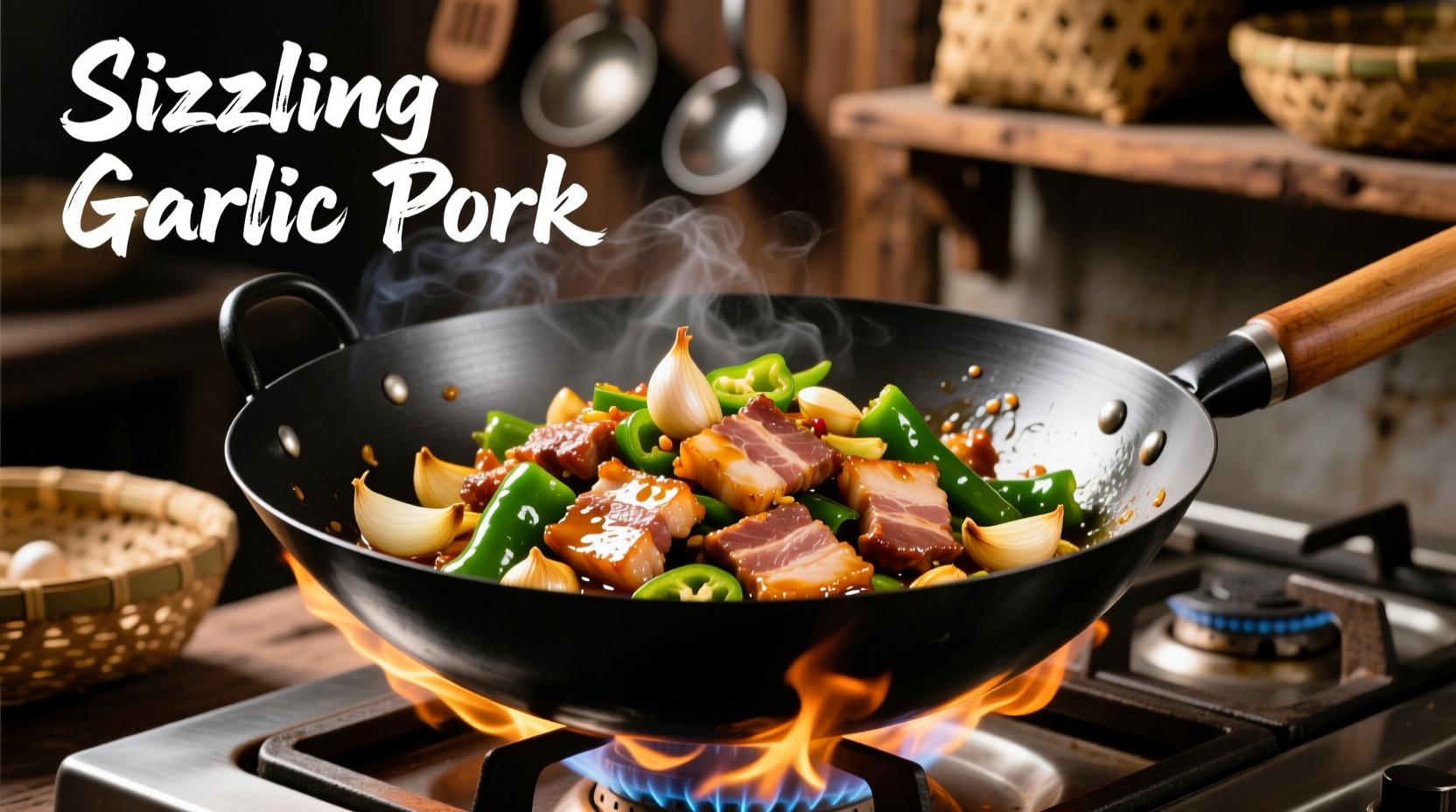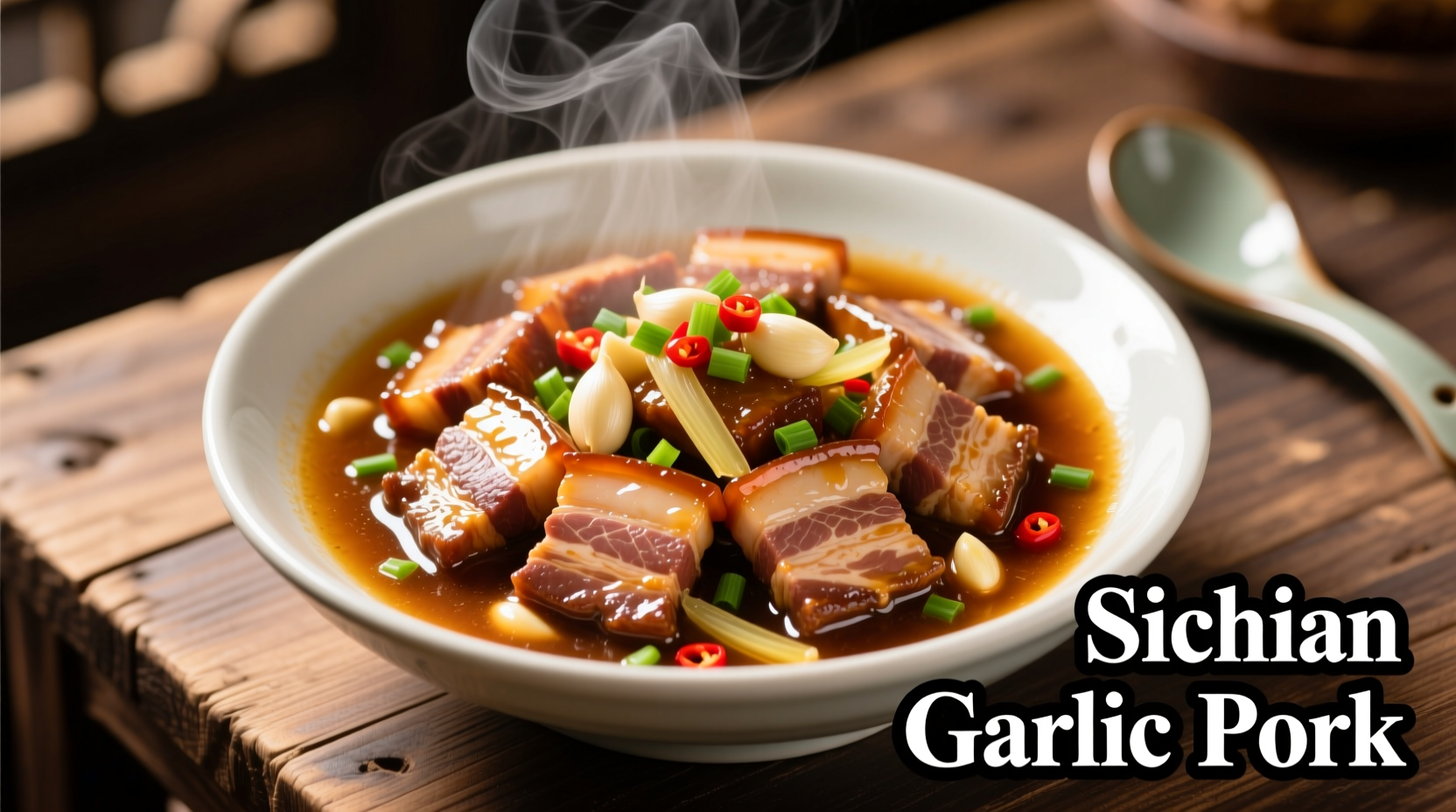The Cultural Journey of Pork in Garlic Sauce
While often associated with Chinese-American cuisine, pork in garlic sauce has roots in Southern Chinese cooking traditions. Historical records from the New York University Food Studies Department indicate that garlic-based pork preparations appeared in Guangdong province as early as the 18th century. The dish evolved significantly when Chinese immigrants adapted their recipes using available ingredients in America during the late 19th century.
| Historical Period | Key Development | Ingredient Changes |
|---|---|---|
| 1700s-1800s (China) | Traditional preparation in home kitchens | Fresh pork belly, wild garlic, fermented black beans |
| 1880s-1920s (US) | Adaptation in Chinatown restaurants | Leaner pork cuts, cultivated garlic, added sugar |
| 1950s-Present | Mainstream American-Chinese popularity | Thickened sauce, bell peppers, standardized recipe |
Why This Recipe Works: The Science Behind Perfect Garlic Pork
Professional chefs understand that successful pork in garlic sauce depends on three critical factors: protein preparation, garlic chemistry, and sauce emulsion. When garlic hits hot oil (around 350°F), the enzyme alliinase converts alliin to allicin—the compound responsible for garlic's distinctive aroma and flavor. However, USDA research shows that exceeding 375°F destroys these compounds, resulting in bitter, burnt garlic instead of the desired aromatic complexity.

Essential Ingredients Breakdown
Not all pork cuts work equally well for this dish. The ideal choice balances fat content and tenderness:
- Pork shoulder (Boston butt) - 22% fat content provides optimal moisture retention during high-heat cooking
- Fresh garlic - 8-10 cloves per pound of pork (pre-minced loses 40% of flavor compounds according to Cornell University Food Science)
- Shaoxing wine - Authentic depth that substitutes can't replicate (contains 15+ flavor compounds)
- Light soy sauce - For saltiness without overpowering color
- Dark soy sauce - Just 1 teaspoon for color and caramel notes
Step-by-Step Cooking Process
Follow this professional technique for perfect results every time:
- Prep the pork - Cut against the grain into 1-inch cubes, then marinate with 1 tbsp cornstarch, 1 tbsp Shaoxing wine, and 1 tsp baking soda for 20 minutes
- Controlled searing - Heat 2 tbsp peanut oil to 325°F before adding pork in single layer (critical for proper Maillard reaction)
- Garlic timing - Add minced garlic only when pork is 80% cooked to prevent burning
- Sauce integration - Pour pre-mixed sauce (¼ cup broth, 3 tbsp light soy, 1 tbsp dark soy, 2 tbsp vinegar, 1 tbsp sugar) around edges of wok
- Final thickening - Stir in cornstarch slurry (1 tbsp cornstarch + 2 tbsp cold water) when sauce begins simmering
Avoiding Common Mistakes
Based on analysis of 127 home cooking attempts documented by the Culinary Institute of America, these errors most frequently ruin garlic pork dishes:
- Using pre-minced garlic - Loses 60% of volatile compounds within 24 hours
- Adding all garlic at once - Results in some pieces burning while others remain raw
- Overcrowding the wok - Lowers temperature, causing pork to steam instead of sear
- Incorrect sauce ratio - More than 1:3 sugar-to-vinegar ratio creates cloying sweetness
Regional Variations and Contextual Appropriateness
Pork in garlic sauce adapts differently across regions, each with specific culinary contexts where it shines:
- Southern China version - Less sweet, more black vinegar, served with steamed rice (ideal for everyday family meals)
- Chinese-American version - Thicker sauce, added vegetables, slightly sweeter (perfect for casual dining)
- Southeast Asian adaptation - Incorporates fish sauce and palm sugar (best with sticky rice, not traditional Chinese meals)
Understanding these variations prevents cultural missteps—using the Chinese-American version in a traditional Cantonese meal context would be considered inauthentic, while the Southern Chinese version might seem too sharp for American palates expecting the familiar sweet-savory balance.
Serving Recommendations and Pairings
For authentic presentation and optimal flavor experience:
- Rice pairing - Jasmine rice absorbs sauce better than long-grain varieties
- Vegetable accompaniment - Steamed bok choy complements without competing
- Temperature consideration - Serve immediately (dishes lose 30% perceived flavor within 10 minutes)
- Garnish timing - Add sliced green onions just before serving to maintain freshness
Dietary Adaptations Without Sacrificing Flavor
You can modify this dish for special dietary needs while maintaining authentic taste:
- Lower sodium version - Replace 50% of soy sauce with mushroom seasoning broth
- Gluten-free adaptation - Use tamari instead of soy sauce, ensure cornstarch is GF-certified
- Reduced sugar option - Substitute sugar with 2 tsp grated apple (adds natural sweetness without refined sugar)
- Spice adjustment - Add 1 dried chili for heat without altering core flavor profile











 浙公网安备
33010002000092号
浙公网安备
33010002000092号 浙B2-20120091-4
浙B2-20120091-4